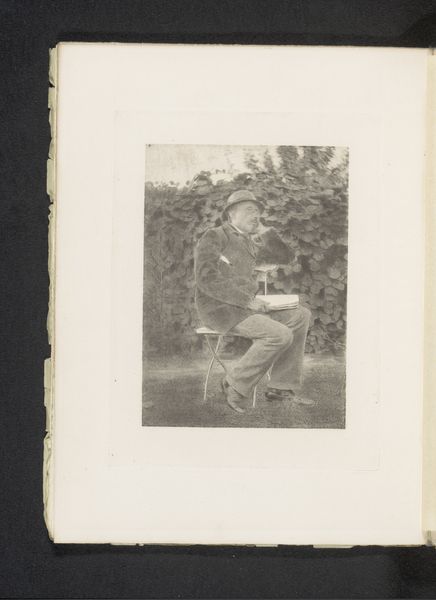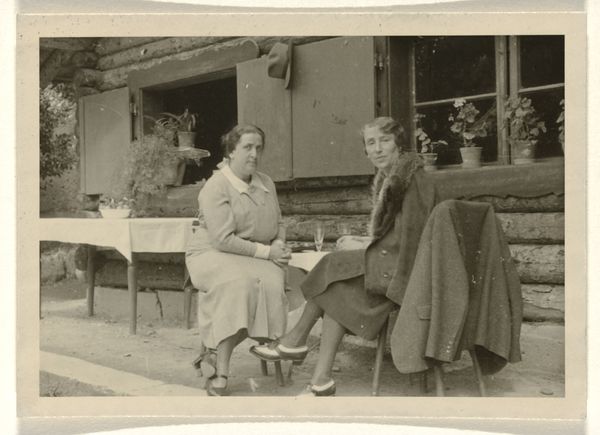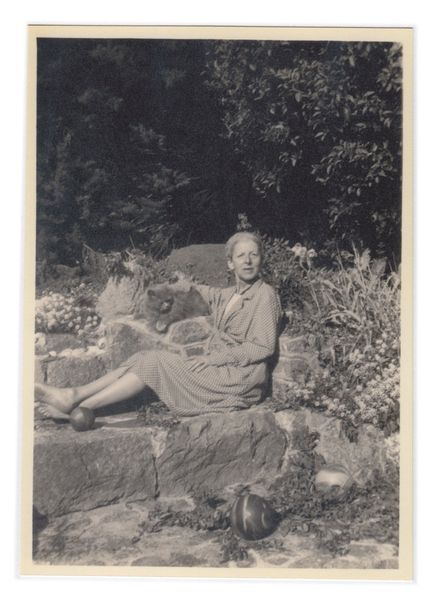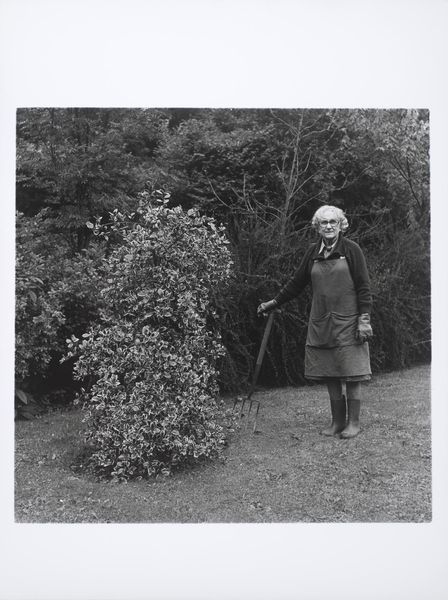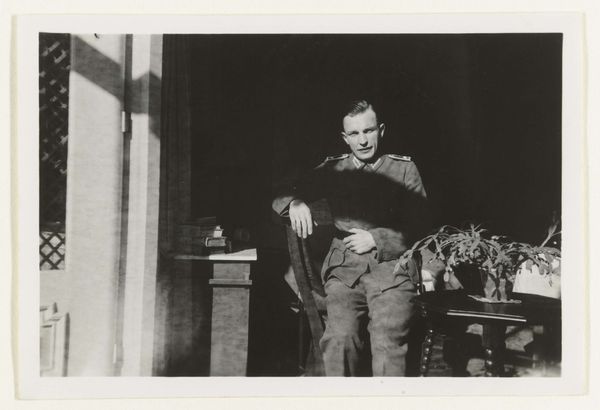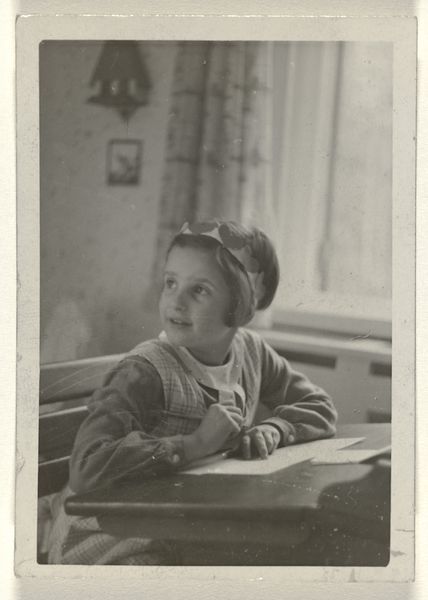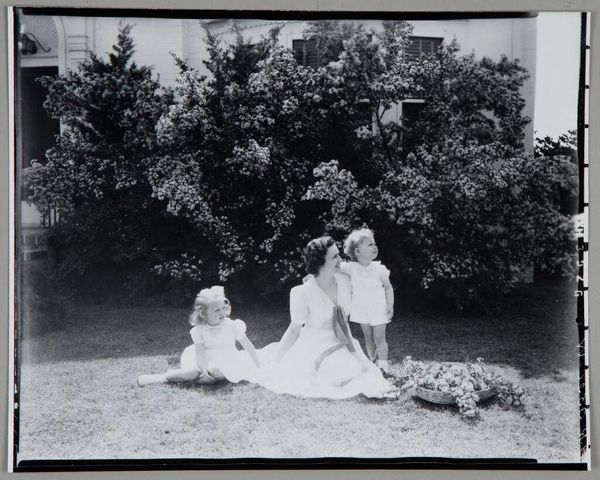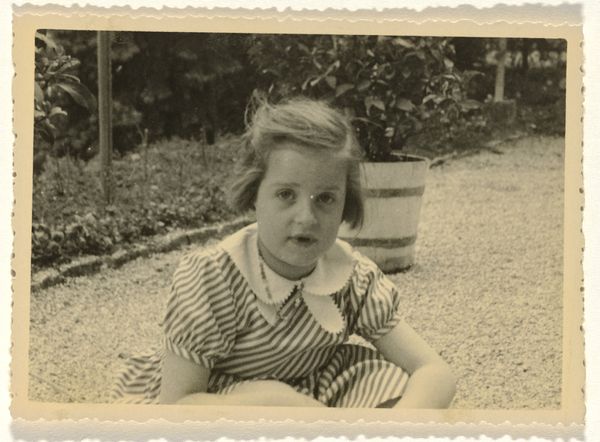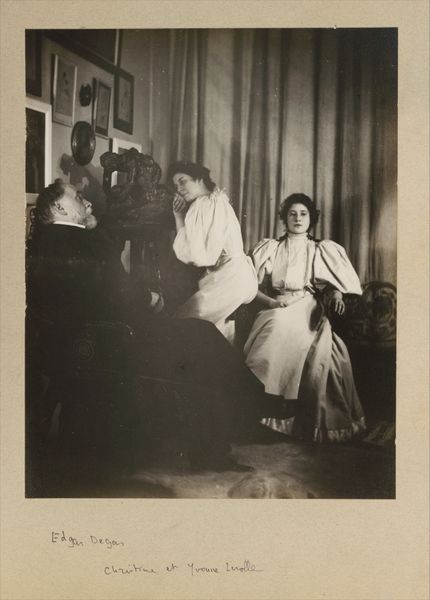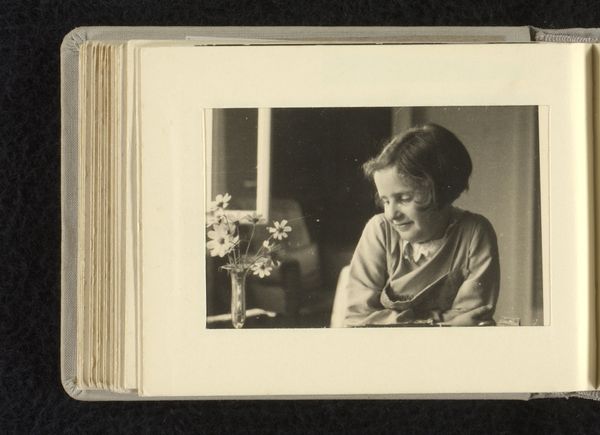
Dimensions: sheet: 17.8 x 23.8 cm (7 x 9 3/8 in.)
Copyright: National Gallery of Art: CC0 1.0
Editor: This gelatin-silver print, "Woman with flowers, Paris," was taken by Robert Frank in 1951. She’s really nestled amongst those blossoms; the flowers seem almost as much a subject as she is. How should we interpret this work in terms of cultural context? Curator: Well, think about the historical setting: postwar Paris. The city was recovering, redefining itself. Frank, as an outsider, captures a moment that feels simultaneously staged and spontaneous. How do you think that tension plays out within the image itself? Editor: It feels performative, almost like a theatre set. The chairs in the background, the woman’s gaze, even the flowers... Curator: Precisely. The image hints at the reconstruction of Parisian identity – a staged elegance, perhaps, to mask the recent traumas. Note the formal composition – the chairs lined up like an audience, the woman centered yet almost hiding. The 'politics of imagery' were particularly important after the Second World War, consider also who Frank’s audience would have been… did they share his viewpoint? Editor: That's interesting... a re-staging for tourists or even for themselves, through images like this. Was Frank intentionally commenting on this? Curator: It's likely Frank aimed to expose rather than celebrate. His lens often found the subtle anxieties beneath the surface. Think of the flowers—ostensibly symbols of beauty, but here, maybe, symbols of artifice or performance. Does this reading resonate with you? Editor: It does now. Seeing it as less a simple portrait and more of a commentary changes everything. Thanks! Curator: Absolutely. It’s a reminder of how deeply social context is embedded even within seemingly simple photographs.
Comments
No comments
Be the first to comment and join the conversation on the ultimate creative platform.
